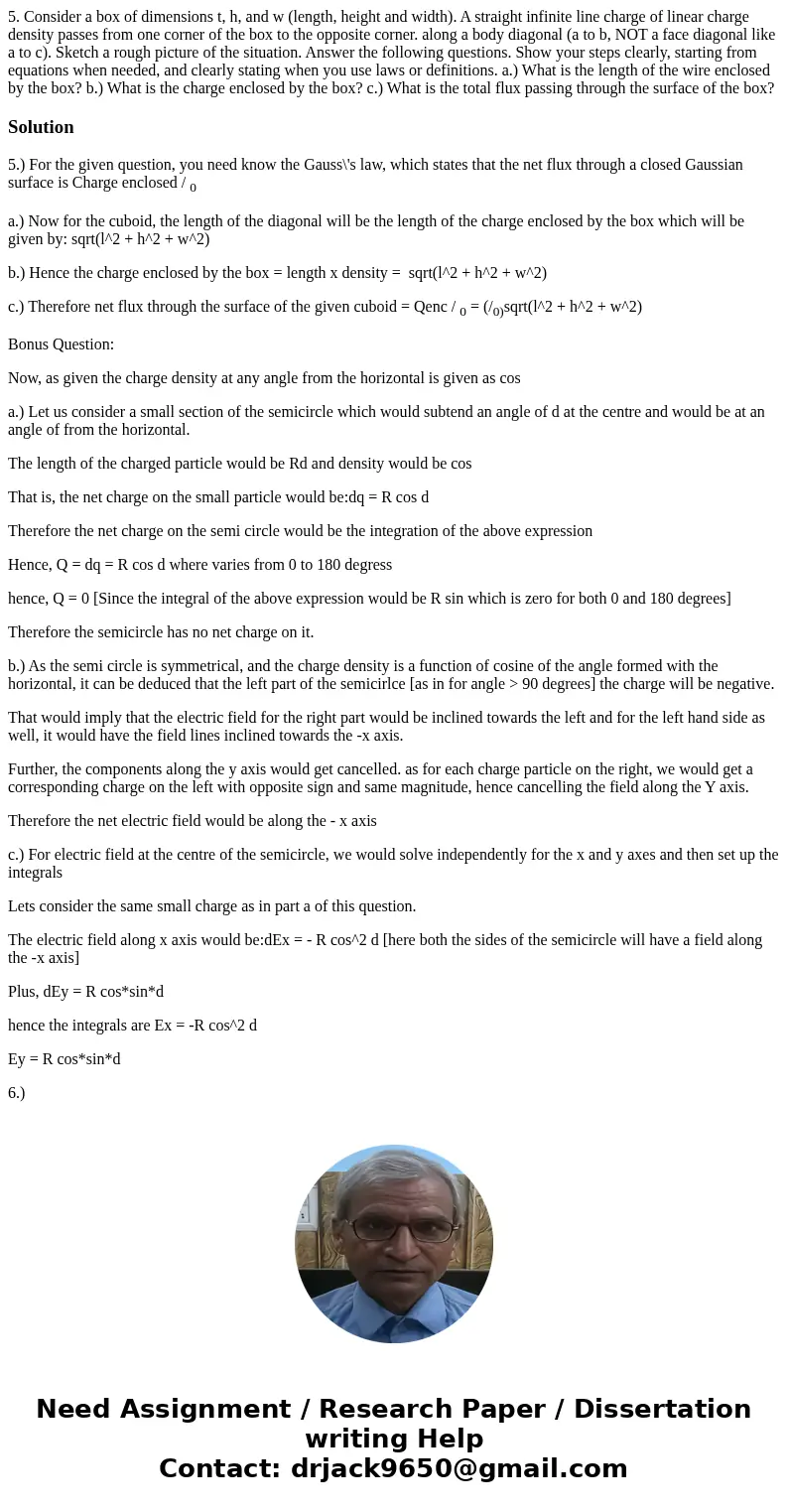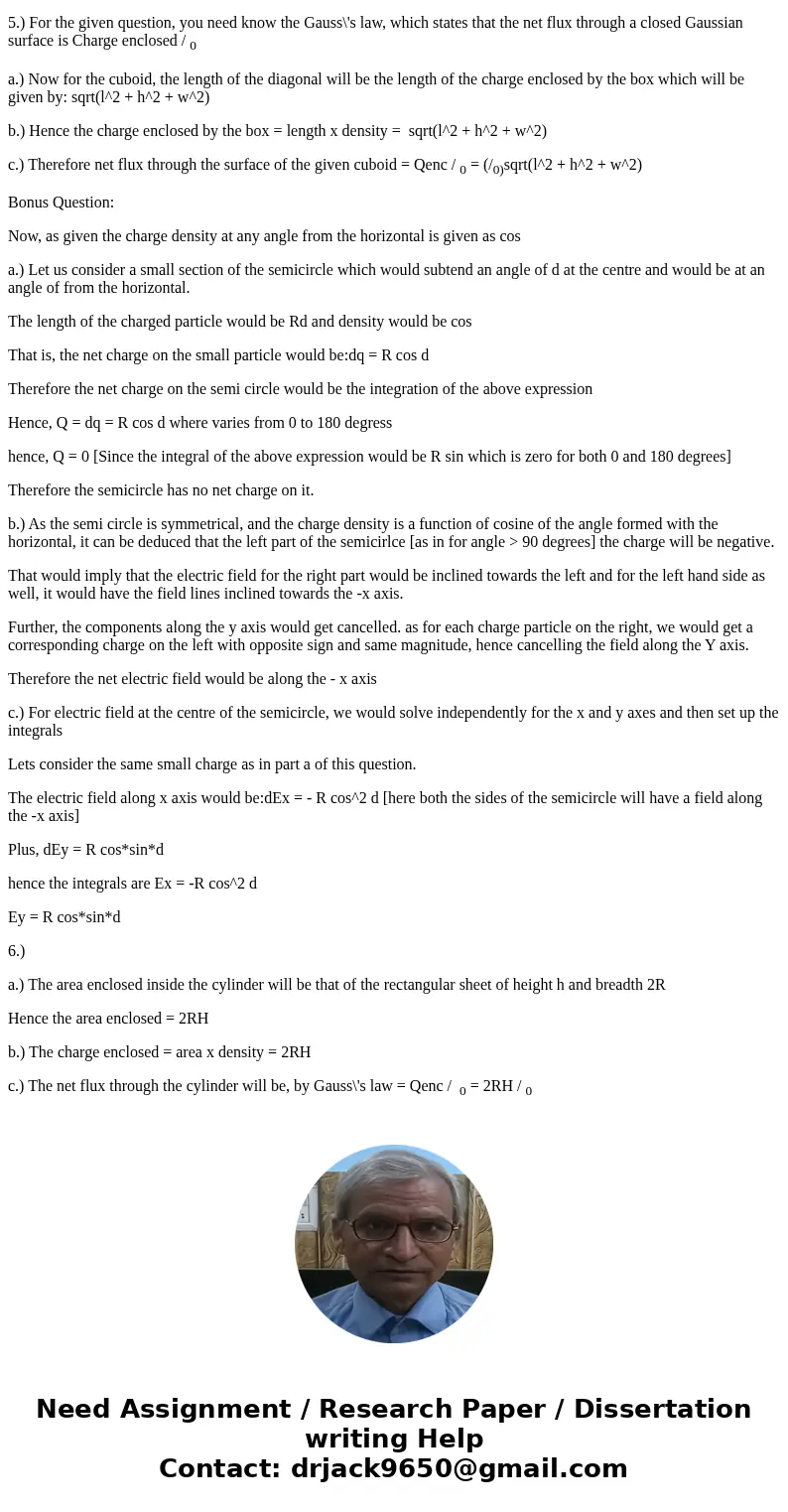5 Consider a box of dimensions t h and w length height and w
Solution
5.) For the given question, you need know the Gauss\'s law, which states that the net flux through a closed Gaussian surface is Charge enclosed / 0
a.) Now for the cuboid, the length of the diagonal will be the length of the charge enclosed by the box which will be given by: sqrt(l^2 + h^2 + w^2)
b.) Hence the charge enclosed by the box = length x density = sqrt(l^2 + h^2 + w^2)
c.) Therefore net flux through the surface of the given cuboid = Qenc / 0 = (/0)sqrt(l^2 + h^2 + w^2)
Bonus Question:
Now, as given the charge density at any angle from the horizontal is given as cos
a.) Let us consider a small section of the semicircle which would subtend an angle of d at the centre and would be at an angle of from the horizontal.
The length of the charged particle would be Rd and density would be cos
That is, the net charge on the small particle would be:dq = R cos d
Therefore the net charge on the semi circle would be the integration of the above expression
Hence, Q = dq = R cos d where varies from 0 to 180 degress
hence, Q = 0 [Since the integral of the above expression would be R sin which is zero for both 0 and 180 degrees]
Therefore the semicircle has no net charge on it.
b.) As the semi circle is symmetrical, and the charge density is a function of cosine of the angle formed with the horizontal, it can be deduced that the left part of the semicirlce [as in for angle > 90 degrees] the charge will be negative.
That would imply that the electric field for the right part would be inclined towards the left and for the left hand side as well, it would have the field lines inclined towards the -x axis.
Further, the components along the y axis would get cancelled. as for each charge particle on the right, we would get a corresponding charge on the left with opposite sign and same magnitude, hence cancelling the field along the Y axis.
Therefore the net electric field would be along the - x axis
c.) For electric field at the centre of the semicircle, we would solve independently for the x and y axes and then set up the integrals
Lets consider the same small charge as in part a of this question.
The electric field along x axis would be:dEx = - R cos^2 d [here both the sides of the semicircle will have a field along the -x axis]
Plus, dEy = R cos*sin*d
hence the integrals are Ex = -R cos^2 d
Ey = R cos*sin*d
6.)
a.) The area enclosed inside the cylinder will be that of the rectangular sheet of height h and breadth 2R
Hence the area enclosed = 2RH
b.) The charge enclosed = area x density = 2RH
c.) The net flux through the cylinder will be, by Gauss\'s law = Qenc / 0 = 2RH / 0


 Homework Sourse
Homework Sourse